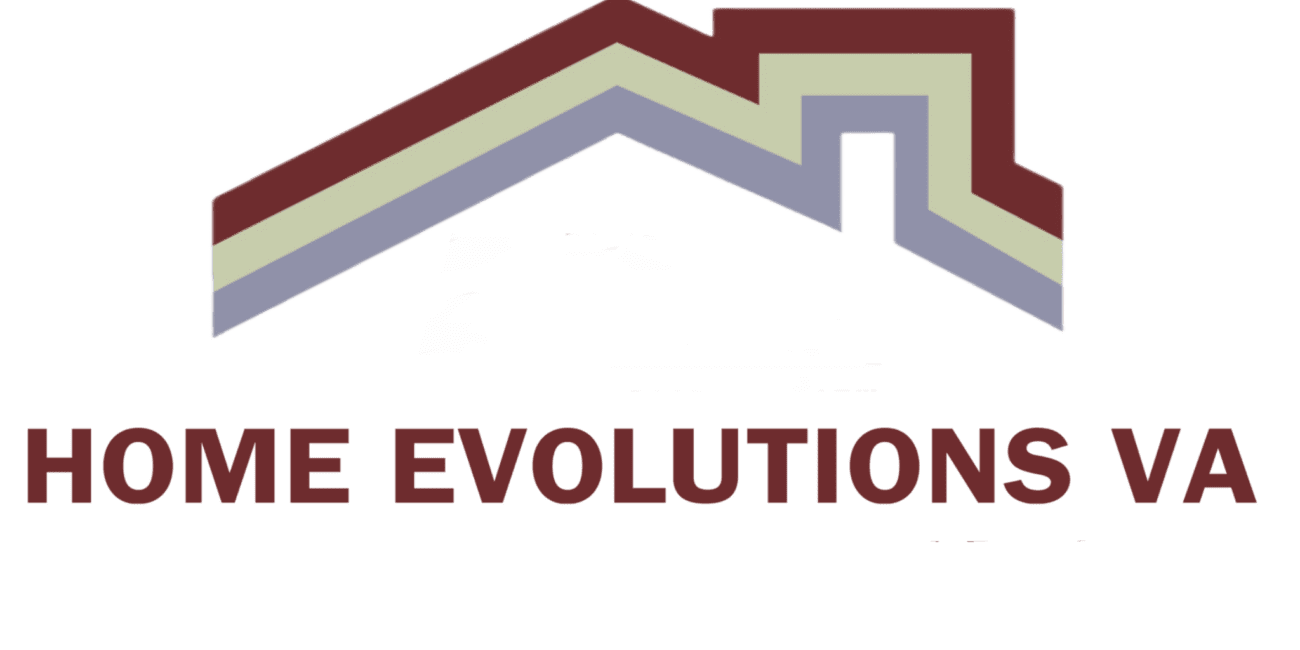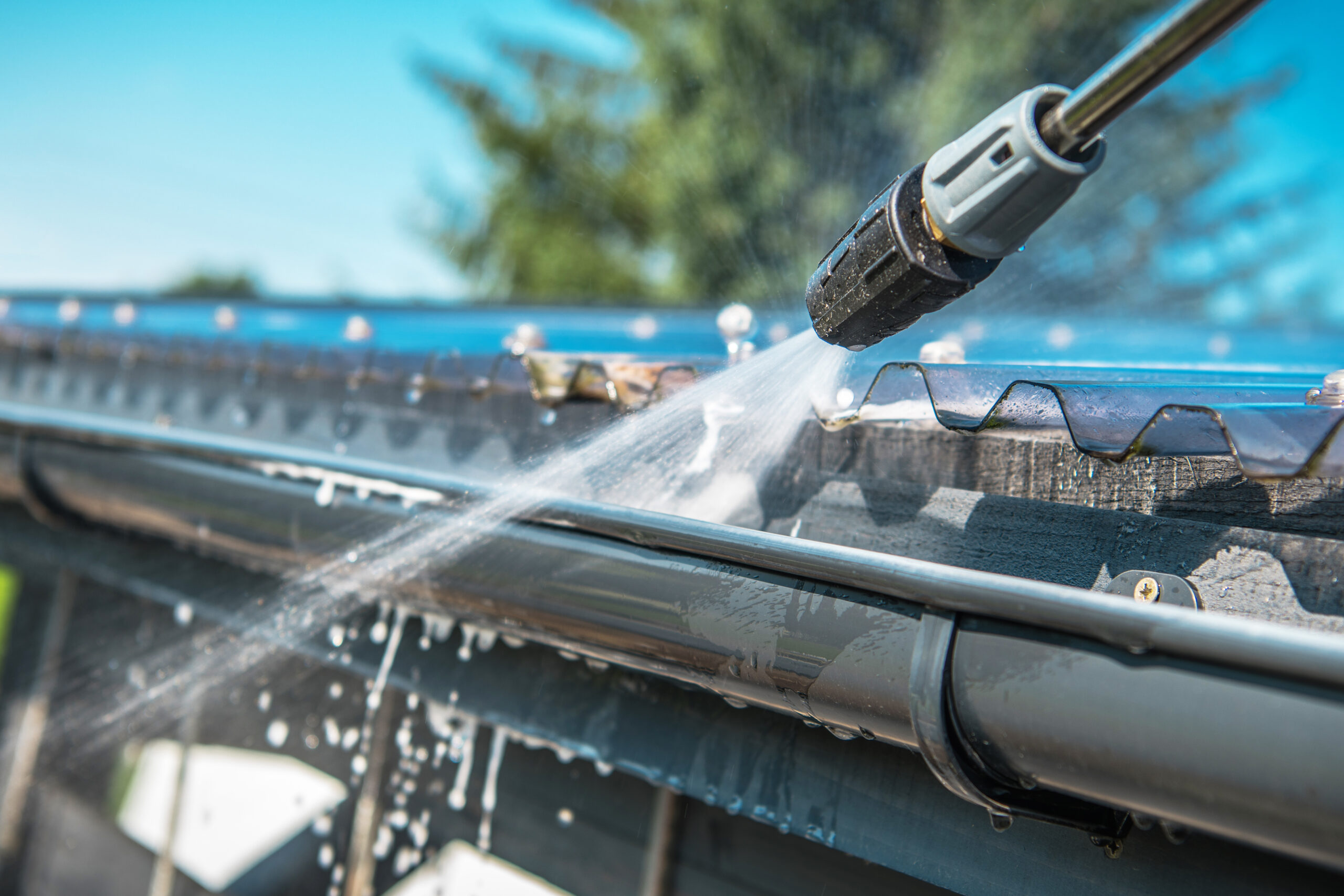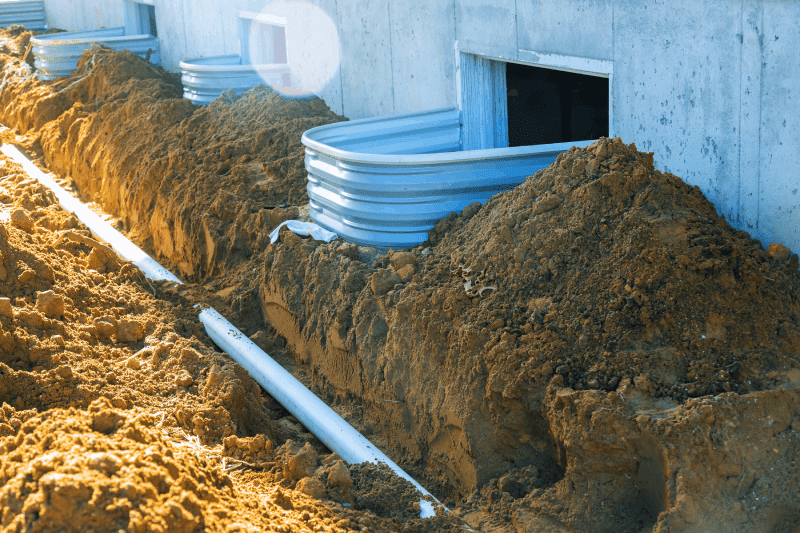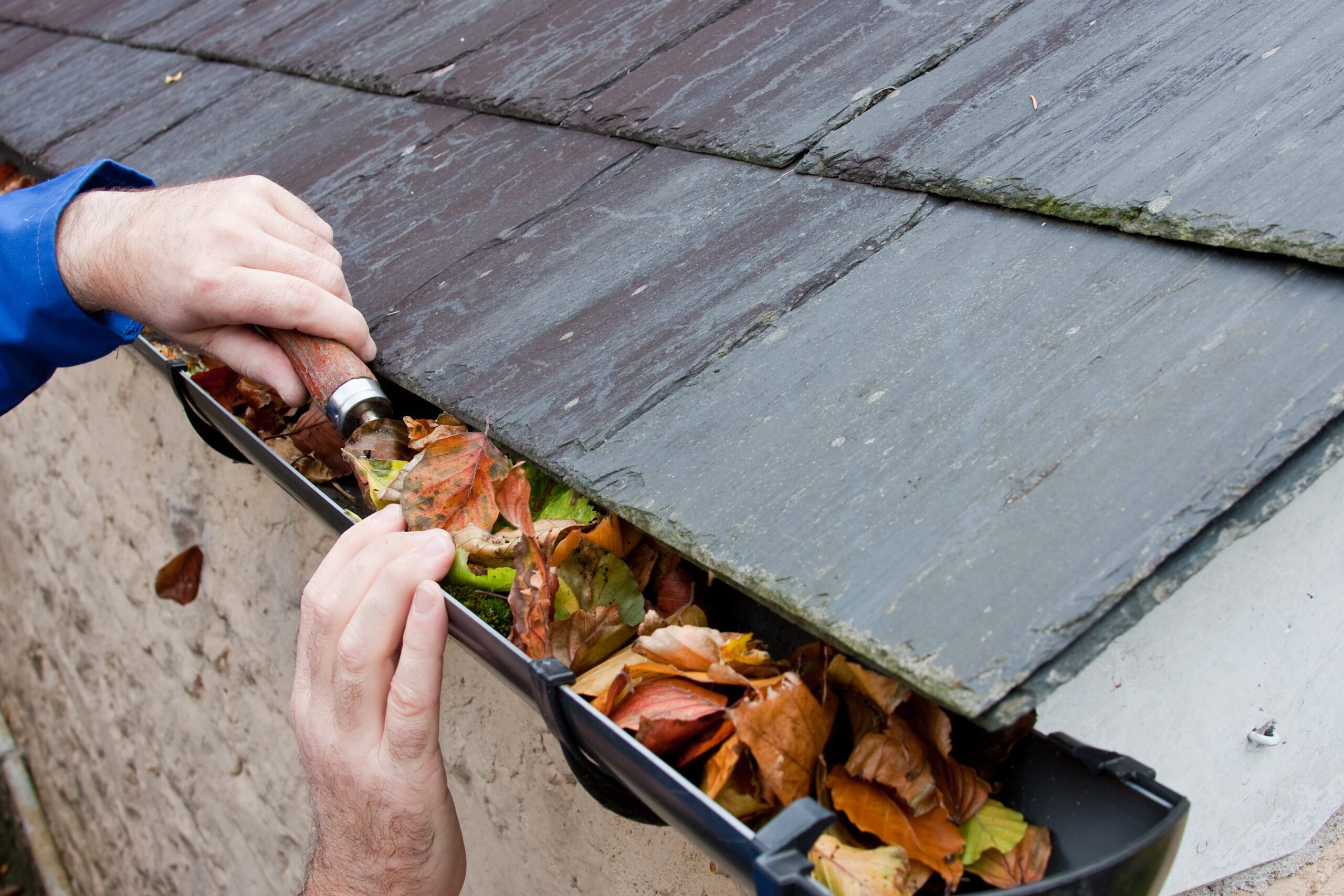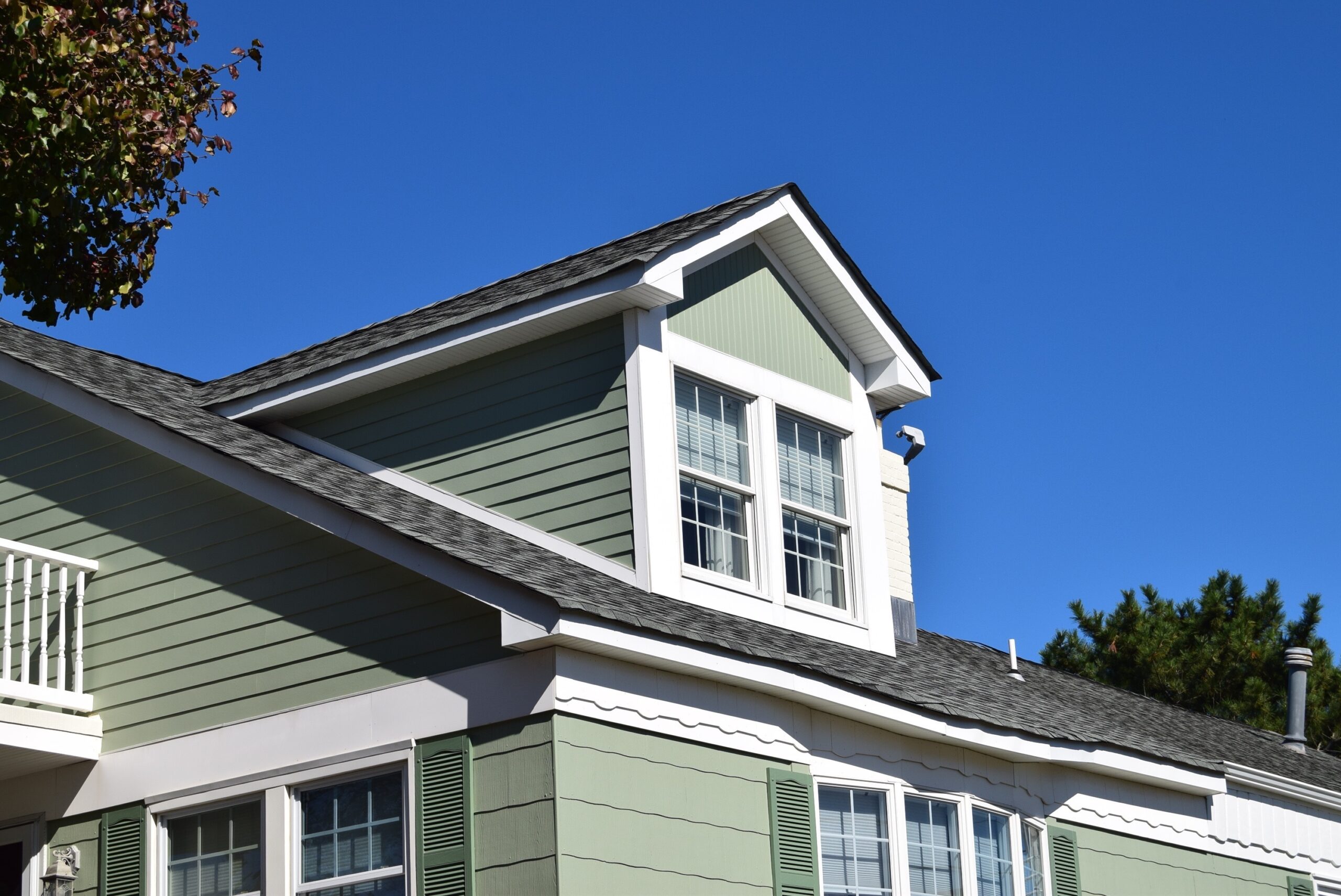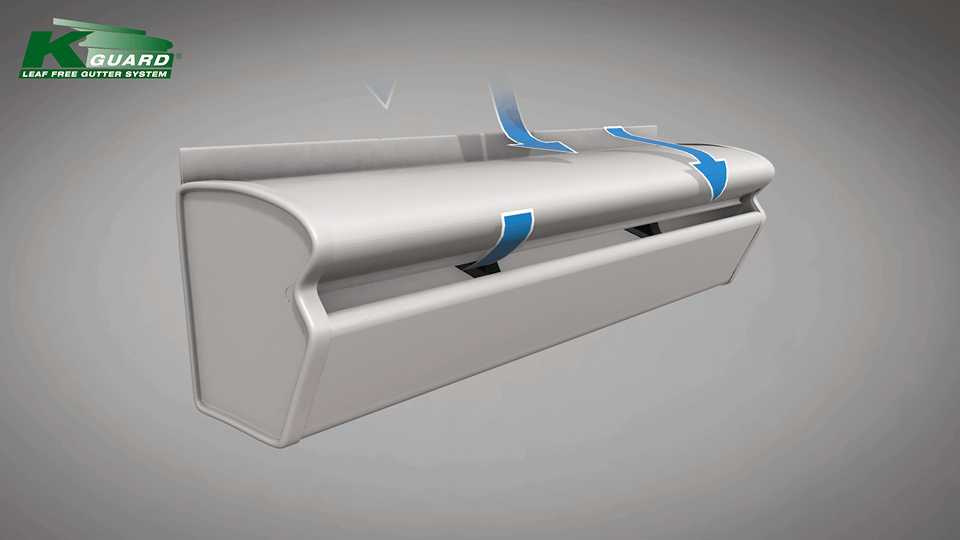
The Anatomy of a Gutter System: Educating Homeowners on What’s Beyond the Downspout
When you’re mowing the lawn, pressure washing the home or walkways, or working on your landscaping, odds are you often come in contact with your gutter system’s downspouts. They’re easily the first thing we see as homeowners because they’re at eye level with us. But did you know that a gutter system has many other components and pieces?
Keep reading to learn about the anatomy of a gutter system to learn what’s beyond the downspout!
Anatomy of Traditional Gutter Systems
Whether you have a half-round gutter system, a gutter system with guards, K-style gutters, or a gutter system with a screen/filter, the anatomy of most gutter systems is the same. Many components work together to collect, carry, and divert water away from a home. Below are the general components of traditional gutter systems:
Gutter
The concept of gutters is easy; they’re placed underneath a roof to collect the water that naturally falls from a roof due to gravity. The gutter then carries the stormwater or meltwater toward a downspout, where it’s diverted away from the home. Professional gutter installation companies place gutters strategically to ensure they’re angled and placed in the perfect spot to ensure stormwater and meltwater collect and flow toward the downspouts.
Gutters are available in various materials like aluminum, copper, steel, and vinyl. Each material has different maintenance requirements and durability yet functions the same. No matter the material used, all gutters help prevent drainage issues, keeping the roof dry and the foundation protected from excess water.
Gutter Hanger
Have you ever wondered how a gutter system with multiple components mounts to a home? A gutter hanger must be installed before the gutters so the gutters can be mounted to it. Not only does a gutter hanger fasten the gutters to the home, but it also helps support the weight of the entire gutter system. Most gutter installation companies fasten the gutter hanger to the home by mounting it to the fascia board. However, some companies mount their gutter hangers on the roof, which can cause damage and issues.
First, mounting a gutter hanger to a roof and securing it under a shingle puts the roof at risk of costly damage. If a gutter system is of lower quality, isn’t made from a durable material, or has preexisting damage, it can damage the roof during severe weather or excess weight of stormwater or meltwater in the gutter system that tears the gutter hanger off. The result? Missing shingles and a whole lot of roof damage.
Next, depending on how a gutter installation company mounted the gutter hangers to the roof, it will most likely void your roof’s warranty. When you replaced your roof, it was an investment, one you hope will last for many years. Unfortunately, many roof warranties have been voided by mounting a gutter hanger to the roof, and homeowners have been responsible for very costly repairs.
Gutter Apron/Drip Edge
Gutter aprons and drip edges serve the same purpose yet differ in design. Gutter aprons and drip edges function to keep stormwater or meltwater draining from your roof in the gutter, blocking it from entering the area behind the gutters. A difference is that gutter aprons are shaped like an L, while drip edges come in many different shapes like T, Z, and F.
Without a gutter apron or drip edge, water that flows from the roof would be able to seep behind the gutters, making its way toward the soffit and fascia boards, eventually causing mold to grow behind the gutters and causing wood rot.
End Cap
The tiniest component of most gutter systems is the end cap. It’s a small piece of material (the same as your gutter system’s material) that’s placed over the opening of a gutter where it ends, most often in a corner. End caps keep water inside the gutter so it can eventually make its way to the downspouts. Without an end cap, a gutter would drain the water it collected out the sides, never inside the downspouts.
Downspouts
No gutter system would be complete without adding downspouts. Downspouts continue the job of a gutter by collecting the stormwater and meltwater and dispersing it away from the home’s foundation and landscaping. Without a downspout, gutters would collect meltwater and stormwater from a roof and it would simply fall to the ground directly underneath the gutters. Think of how bad the soil erosion in our yards would be, how damaged our basements and foundations would get, and how unappealing our homes would look.
Thankfully, a properly working downspout takes the water from the gutter and diverts it away from the foundation so it doesn’t land directly under the gutters.
Anatomy of K-Guard Gutters
At Home Evolutions VA, we’re proud to install the K-Guard System, a complete system that is 100% clog-free. K-Guard differs from traditional gutters in the size of the gutters and downspouts, polymer gutter hangers, and has an extra component: a curved hood.
Curved Hood
K-Guard is unlike any other gutter system because of its curved hood. The hood is placed directly over the gutter, protecting it from leaves, pests, and other debris that easily enters traditional gutter systems. The curved hood allows debris to simply slide off, never allowing it to enter the inside of the gutters. Only water adheres to the curved hood, entering the system through the front and back of the gutters through drainage channels.
Oversized Gutters & Downspouts
Another part of K-Guard that sets it apart is the oversized gutters and downspouts compared to other systems. Our gutters and downspouts are oversized compared to traditional gutter systems to allow more water to be flushed through the system to ensure it’ll hold up, even to record-setting rain totals.
Polymer Gutter Hangers
Unlike traditional gutter hangers, K-Guard’s are extremely durable and the strongest available, ensuring they hold up against all weather. We place them every 24 inches inside the gutters so the weight of the gutter system is strong enough to support the weight of the system and the water inside it. Plus, because we never mount our gutters to the roof, we’ll never void your roof’s warranty.
If your home needs gutters installed or you need to replace your existing gutter system, consider installing the K-Guard System, a complete system with oversized gutters, downspouts, and a curved hood, which rapidly keeps debris out and water moving through the gutter system.
Home Evolutions VA has been installing and repairing gutter systems for decades with tens of thousands of happy customers in Lynchburg and surrounding areas. We can help with all your home improvement needs, whether you need help with an insurance claim or a quote for installing a new roof or gutter system. We’re here to help every step of the way throughout the entire process. Contact us today for a free estimate!
